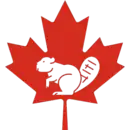| Part of a series on |
| Canadian wildlife |
|---|
 |
A National Wildlife Area is a conservation designation for a geographical region in Canada that restricts most human activities on that region.[1] However, land use permits may be issued "for activities that are compatible with conservation".[1] Such areas are established and managed by the Canadian Wildlife Service, a division of Environment and Climate Change Canada. They may consist of land and water features, as well as coastal areas extending up to 12 nautical miles (22 km) from shore.
The largest national wildlife area is the Scott Islands Marine National Wildlife Area in British Columbia, which covers an area of 11,570.65 km2 (4,467.45 sq mi).[2]
Protections
Each National Wildlife Area involves a management plan which specifies activities which are generally allowed within the protected area, as well as activities requiring permits.[3] Under the Wildlife Area Regulations, traditional, personal and recreational activities such as hunting, fishing, or canoeing are allowed, whereas resource extraction or livestock grazing would be permitted only under the authority of a yearly permit with strict limits.[3] Some National Wildlife Area in the territories, such as Polar Bear Pass, require co-management between federal government agencies and the Inuit, per the Nunavut Land Claims Agreement.[4]
List of National Wildlife Areas in Canada
This is a list of National Wildlife Areas in Canada by province. It uses data from Environment and Climate Change Canada.[5]
Alberta
- Blue Quills National Wildlife Area, 0.97 km2 (0.37 sq mi)
- Meanook National Wildlife Area, 2.14 km2 (0.83 sq mi)
- Spiers Lake National Wildlife Area, 0.65 km2 (0.25 sq mi)
- Suffield National Wildlife Area, 458.07 km2 (176.86 sq mi)
British Columbia
- Alaksen National Wildlife Area,[lower-alpha 1] 2.99 km2 (1.15 sq mi)
- Columbia National Wildlife Area, 10.01 km2 (3.86 sq mi)
- Qualicum National Wildlife Area, 0.82 km2 (0.32 sq mi)
- Scott Islands Marine National Wildlife Area, 11,570.65 km2 (4,467.45 sq mi)
- Vaseux-Bighorn National Wildlife Area, 8.12 km2 (3.14 sq mi)
- Widgeon Valley National Wildlife Area, 12.5 km2 (4.8 sq mi)
Manitoba
- Pope National Wildlife Area, 0.31 km2 (0.12 sq mi)
- Rockwood National Wildlife Area, 0.30 km2 (0.12 sq mi)
New Brunswick
- Cape Jourimain National Wildlife Area, 6.21 km2 (2.40 sq mi) — Cape Jourimain
- Portage Island National Wildlife Area, 4.51 km2 (1.74 sq mi)
- Portobello Creek National Wildlife Area, 19.90 km2 (7.68 sq mi)
- Shepody National Wildlife Area,[lower-alpha 1] 9.89 km2 (3.82 sq mi) — Riverside-Albert
- Tintamarre National Wildlife Area, 19.90 km2 (7.68 sq mi)
Nova Scotia
- Boot Island National Wildlife Area,[lower-alpha 1] 1.44 km2 (0.56 sq mi)
- Chignecto National Wildlife Area,[lower-alpha 1] 4.10 km2 (1.58 sq mi)
- John Lusby National Wildlife Area,[lower-alpha 1] 10.20 km2 (3.94 sq mi)
- Sand Pond National Wildlife Area, 5.32 km2 (2.05 sq mi)
- Sea Wolf Island National Wildlife Area, 0.41 km2 (0.16 sq mi)
- Wallace Bay National Wildlife Area, 5.83 km2 (2.25 sq mi)
Nunavut
- Akpait National Wildlife Area, 791 km2 (305 sq mi)
- Ninginganiq National Wildlife Area, 3,364 km2 (1,299 sq mi)
- Nirjutiqavvik National Wildlife Area, 1,650 km2 (640 sq mi)
- Polar Bear Pass National Wildlife Area,[lower-alpha 1] 2,624 km2 (1,013 sq mi)
- Qaqulluit National Wildlife Area, 398 km2 (154 sq mi)
Ontario
- Big Creek National Wildlife Area, 8.02 km2 (3.10 sq mi)
- Eleanor Island National Wildlife Area, 0.01 km2 (0.0039 sq mi)
- Long Point National Wildlife Area,[lower-alpha 1] 32.50 km2 (12.55 sq mi)
- Mississippi Lake National Wildlife Area, 2.35 km2 (0.91 sq mi)
- Mohawk Island National Wildlife Area, 0.04 km2 (0.015 sq mi)
- Prince Edward Point National Wildlife Area, 2.46 km2 (0.95 sq mi)
- Scotch Bonnet Island National Wildlife Area, 0.01 km2 (0.0039 sq mi)
- St. Clair National Wildlife Area,[lower-alpha 1] 2.89 km2 (1.12 sq mi)
- Wellers Bay National Wildlife Area, 0.40 km2 (0.15 sq mi)
- Wye Marsh National Wildlife Area, 0.47 km2 (0.18 sq mi)
Quebec
- Baie de l'Isle-Verte National Wildlife Area,[lower-alpha 1] 7.97 km2 (3.08 sq mi)
- Cap Tourmente National Wildlife Area,[lower-alpha 1] 23.99 km2 (9.26 sq mi)
- Îles de Contrecoeur National Wildlife Area, 3.12 km2 (1.20 sq mi)
- Îles de l'Estuaire National Wildlife Area, 4.09 km2 (1.58 sq mi)
- Îles de la Paix National Wildlife Area, 1.20 km2 (0.46 sq mi)
- Lac Saint-François National Wildlife Area,[lower-alpha 1] 14.46 km2 (5.58 sq mi)
- Pointe-au-Père National Wildlife Area, 0.23 km2 (0.089 sq mi)
- Pointe de l'Est National Wildlife Area, 9.74 km2 (3.76 sq mi)
Saskatchewan
- Bradwell National Wildlife Area, 1.23 km2 (0.47 sq mi)
- Last Mountain Lake National Wildlife Area,[lower-alpha 1] 168.98 km2 (65.24 sq mi)
- Prairie National Wildlife Area, 29.38 km2 (11.34 sq mi)
- Raven Island National Wildlife Area, 0.94 km2 (0.36 sq mi)
- St. Denis National Wildlife Area, 3.61 km2 (1.39 sq mi)
- Stalwart National Wildlife Area, 15.25 km2 (5.89 sq mi)
- Tway National Wildlife Area, 0.96 km2 (0.37 sq mi)
- Webb National Wildlife Area, 4.27 km2 (1.65 sq mi)
Yukon
- Nisutlin River Delta National Wildlife Area, 54.88 km2 (21.19 sq mi)
See also
References
- 1 2 "National Wildlife Areas". The Atlas of Canada. Natural Resources Canada. Archived from the original on 14 December 2007. Retrieved 27 January 2008.
- ↑ "Scott Islands Marine National Widllife Area". Protected Planet. Retrieved 25 September 2020.
- 1 2 "Environment Canada's Protected Areas Network". Canadian Wildlife Service and Canadian Wildlife Federation. Archived from the original on 13 February 2008. Retrieved 27 January 2008.
- ↑ "Polar Bear Pass National Wildlife Area, Nunavut - Ramsar Site". Environment Canada. Archived from the original on 4 May 2008. Retrieved 27 January 2008.
- ↑ "National Wildlife Areas". Retrieved 19 July 2016.